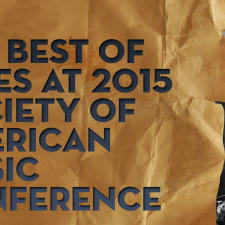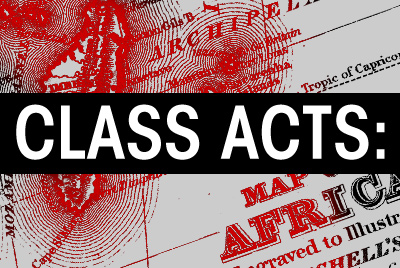Lecture 2: Exceptional Errors
Something was terribly wrong among the black Methodists in the early 19th century. In 1819, John F. Watson, a disapproving minister, published a diatribe called Methodist Error: Or Friendly Christian Advice to those Methodists Who Indulge in Extravagant Emotions and Bodily Exercises discouraging congregants from musical practices that they obviously enjoyed. His words, obviously meant to stress what he found abhorrent, provide modern day readers with a sonic outline of how the music sounded, of its communal nature, and of its in-real-time compositional techniques, among other priorities. In short, we are able to “hear”—as best we can this many years removed—what kinds of music-making were valuable to Africana people in North America at that time. Watson wrote with striking clarity about what he heard and saw. And unbeknownst to him, these qualities would constitute foundational principles for future music making in black communities.
“In the blacks’ quarter, the coloured people get together, and sing for hours together, short scraps of disjointed affirmations, pledges, or prayers, lengthened out with long repetition choruses. These are all sung in the merry chorus-manner of the southern harvest field, or husking-frolic method, of the slave blacks. . .With every word so sung, they have a sinking of one or other leg of the body alternately; producing an audible sound of the feet at every step, and as manifest as the steps of actual negro dancing in Virginia. . . .If some, in the meantime sit, they strike the sounds alternately on each thigh. What in the name of religion, can countenance or tolerate such gross perversions of true religion!. . . I have known in some camps meetings, from 50 to 60 people crowded into one tent, after the public devotions had closed, and there continue the whole night, singing tune after tune. . . .Some of these . . . are actually composed as sung, and are indeed almost endless.”
He wasn’t wrong about them being “endless.” Variants of these practices still exist today, undoubtedly because of the social power and cultural relevance they symbolize. Historians of this musical culture (particularly in the 1970s and 1980s) such as Eileen Southern, Portia Maultsby, Dena Epstein, Olly Wilson, Samuel Floyd, Lawrence Levine, and Sterling Stuckey, and others, recognized that a New World black musical culture emerged from the context of the Atlantic slave trade. Between the fifteenth century and the mid-nineteenth century close to 12 million Africans were captured and transported to the New World, with the greatest number imported to Brazil and other locations in the Caribbean sugar industry. Reaching its apex between 1700 and 1820, when 6.5 million Africans were taken, the Atlantic slave trade represented one of the largest forced migrations in world history. Only six percent of the total number exported came directly to, what is known now as, the United States. These captured Africans were distributed along the eastern seaboard from New England to the mid-Atlantic colonies to the Southeast but the greatest concentration landed in the South.
The nature of slavery in the United States was a singular enterprise, categorically different from various iterations of the “peculiar institution” throughout South America and the Caribbean. These distinct qualities shaped the development of African American cultural forms in dance, literature, visual culture and especially music. Despite the ingenious and hideous development of laws and social practices designed to keep black slaves subservient they nonetheless asserted their aspirations, senses of beauty and the sublime, their frustrations, pain, and humanity through sound organization. One of the cultural practices that became an important space to resist abject objectification was the “ring shout.” Transported from West and Central African cultural groups, the shout became an amalgamation of these cultures—”an exchange of country marks”—as historian Michael Gomez called it, that together with the cohesion built from having a common oppressor formed the foundation of African American culture as we know it today. This process of adaptation took centuries.
In the South, the internal slave trade destabilized traditional familial and communal ties, but cultural practices such as music-making became crucial sites of resistance and community building. With the overwhelming majority of blacks living in the plantation culture of the South in the 19th century, it was natural that their musical practices would become widespread and recognized for its extraordinary qualities. The music of slave religious expression and secular work songs reveal their preferred sonic ideals. In their public working and festival settings sanctioned by the masters, the slaves were encouraged to perform “cultural difference” according to practices from their African cultural heritage and as such expressed their own perspectives toward time, work, and their status as human beings. The new cultural formations that emerged had tremendous impact on white Southern culture as well, a pattern that would continue in subsequent centuries.

Fortunately, the black masses did not forsake what Rev. Watson called “exceptional errors” in their musical preferences. Together with theses changes, which the black populace visited on “Eurological” song forms such as hymns, they created song forms of their own making using the same sonic principles. Field hollers, children’s games, spirituals, and early blues are a representative sample. Scholars have found in these early forms conceptual linkages to the sounds that have been documented in slave culture. As Samuel Floyd has written about them extensively in his book The Power of Black Music, these figures and gestures include: calls; cries; hollers; whoops; hums; moans; groans; oral declamations; priority placed on melisma (many notes on one syllable); riffs (short repeated melodic phrases); blue notes (resulting from the combination of major and minor modes); moving from speaking to singing mode; endless improvisation; a preponderance of parallel intervals; cross rhythms and dense uses of syncopation in relationship to a metronomic pulse; call and response devices in every parameter of the music; storytelling within song forms; constant repetition; hand clapping; foot patting; use of the body and dance as part of the music-making process; a heterogeneous sound ideal timbre; and the forwarding of a highly personalized sense of musicality within a collectivity.
This approach to music forms the basis of what scholar and musician, Salim Washington, calls the “jazz-blues aesthetic.” This formulation allows us to think about the blues beyond how it’s commonly known—as a genre marketed in the music industry. We now think about it as a sonic paradigm for uses across a spectrum of genres. As you can see from Floyd’s terminology, every element of the music is influenced in this sound praxis: melody, rhythm, harmony, timbre, and form. Musicologist Susan McClary has identified the blues in its various iterations as a practice “that succeeds magnificently in balancing convention and expression.” Indeed, in the third chapter of Race Music: Black Cultures from Bebop to Hip-Hop, I trace blues practices across a number of recordings in which each are treated as unique statements linked by their employment of what might be called, the cultural “tropes,” outlined above. In each example the musicians achieve within “blues convention” (especially the 12-bar blues form) expressive modalities that bend the blues into individualized statements that remark profoundly on who they believed they were in the social world. In other words, the constant repetition of blues forms through time allows them to become a framework, a blank slate, an “always-already,” invisible format over which performers could write a musically “legible” self.
The four examples below (Dinah Washington [urban blues], Louis Jordan [jump blues], Mahalia Jackson [gospel], and James Brown [soul]) demonstrate how each performer deploys their use of the tropes to create both a personal musical style and historically specific senses of subjectivity in the context of the industry. Whether the point is establishing a sonic language for religious sincerity, ribald femininity, “let the good times roll partying,” or getting America up to dance in the midst of hard times, the blues-jazz aesthetic provides a flexible paradigm of expression.
As we move through the history of jazz’s stylistic morphing, regenerations, and pushes toward a perpetual avant-garde, the principle of innovations within, and against, aesthetic blues norms will be cause for celebration, debate, praise and outrage. And through it all, the term “jazz,” and what it does and doesn’t mean, will be sonically challenged in exciting ways. As we shall see, some observers have adamantly claimed that musicians were in “exceptional error,” just as Rev. Watson did hundreds of years ago.
Tags: academia, black history, Black Music, course work, ethnomusicology, history, musicology, upenn

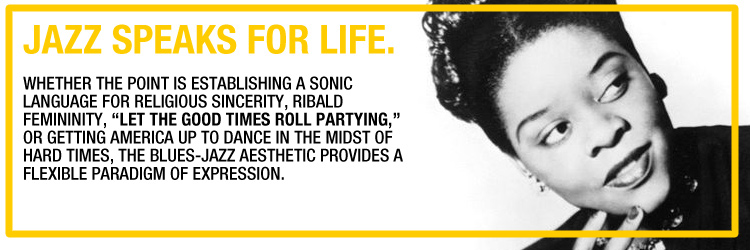
 Share On Facebook
Share On Facebook Tweet It
Tweet It

![[Video] BBC Documentary on Allen Toussaint](https://musiqology.com/blog/wp-content/uploads/2015/11/allen-toussaint-225x225.jpg)

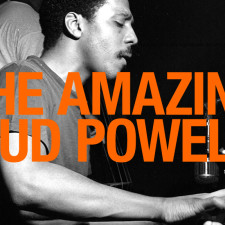
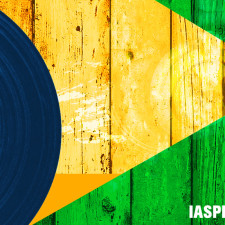
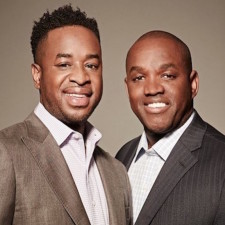
![[VIDEO] Black Music and the Aesthetics of Protest](https://musiqology.com/blog/wp-content/uploads/2015/03/onlynchings1-225x225.jpg)

